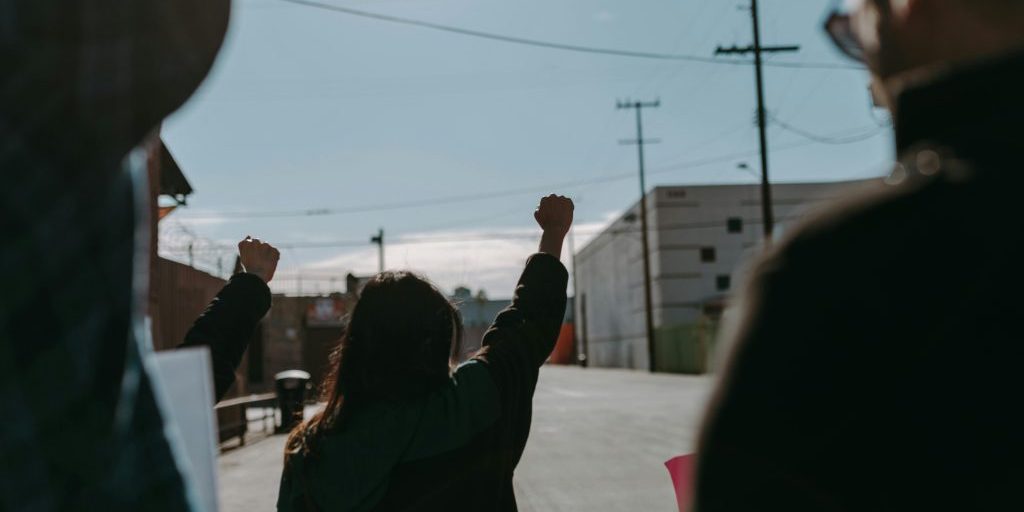The CPJ trained US journalists ahead of the election. Here are the lessons.
PICTURE: RDNE/Pexels
Committee to Protect Journalists
The U.S. presidential election takes place after years of an increasingly polarised political climate in the country.
The election comes after two previous contentious presidential election cycles, amid high levels of distrust in the media and a recent history of journalists being arrested, assaulted and attacked in-person and online, including at protests.
As CPJ’s October 2024 special report on press freedom in the U.S. determined, the safety of journalists is at risk throughout the country with members of the media facing violence, online harassment, legal challenges and attacks by police.
The January 6, 2021 attack on the U.S. Capitol highlights the potential for violence during mass gatherings, and the risks journalists face while covering them. Since the beginning of 2020, the U.S. Press Freedom Tracker has documented more than 800 attacks on journalists while covering such events.
The possibility of similar press freedom violations in the wake of the 2024 U.S. presidential election remains a risk for journalists reporting the news.
In response, since the start of 2024, CPJ’s Emergencies Team has trained more than 700 journalists on how to stay safe while covering the election. (See CPJ’s YouTube playlist for Election Safety Summer training videos, among the many journalist safety training sessions CPJ provided in 2024.)
Given the recent history of danger facing journalists covering political protests and unrest across the U.S., much of this training has been focused on how to safely report on — and during — protests. Digital safety, and how to protect themselves and their colleagues online, is another key training topic.
The CPJ’s advice can be used by journalists facing potential danger almost anywhere in the world.
What should a journalist wear to a protest, and what equipment should they take with them?
In general, best practices are as follows:
- Wear laced, solid but comfortable footwear that cannot slip off easily. Avoid easily flammable materials like nylon, and instead favour items like denim that are more flame-retardant.
- Avoid wearing colours or items of clothing that might resemble something worn by any belligerent actor at the protest. For example, do not wear black or camouflage colors or hoodies. Try not to wear lanyards or items that someone can use to hold onto you. Wear your backpack in front of you.
- Determine whether it is a good idea, or legally required, to identify yourself as a member of the press. Always have press credentials close on hand if required.
- Always carry a mobile phone and a battery pack charger. Ensure that you have a few food supplies with you.
- Depending on the predicted severity of unrest, protective equipment such as ballistic glasses, helmets, and a small medical pack are often useful. Stab vests and respirators can protect you as well, but wearing them will raise your profile, and you should use them to exit a situation safely — not linger.
What are the best practices for planning and preparing for unrest?
- Research the dynamic of the protest in advance and do a risk assessment to identify common threats and plan for worst-case scenarios.
- Work in a team where possible. If necessary, buddy up with other journalists to help each other.
- Plan your arrival, but most importantly, plan your departure from the protest. If it is a march or goes late into the night, you may find yourself in a remote or dangerous location.
- Do not take unnecessary valuables or equipment. It will make you an attractive target for thieves.
- Upon arrival at a location, identify likely flashpoints and main escape routes. Also work out your closest medical evacuation point and a rendezvous location, if required.
- Communicate regularly with an editor, colleague, or another trusted individual about your activities.
- Identify any protest organisers or troublemakers. If you need to interview them, do not stay with them longer than necessary. Remember, the authorities may target them at some point, and you may get caught up in this action.
- Position yourself at the edge of the crowd, only going in for short periods before returning to a place of safety. If you are in the middle of the crowd, it may be hard to remove yourself should there be a stampede.
- Always observe the protestors and the police dynamic. If protestors are becoming more aggressive or police are donning protective equipment, this can indicate there is likely to be a flashpoint.
What are the best practices to keep safe online?
Journalists covering protests are sometimes doxxed after the event, when people who attended the mass gathering post their private information online. Journalists who cover politics or other high-risk beats also risk being the target of online harassment and targeted harassment campaigns.
Before attending a protest or taking on a high-risk assignment, take the following steps:
- Look yourself up online using all search engines and remove or hide data you do not want in the public domain. Use advanced search methods known as Boolean search terms to get the best results.
- Data that is best kept offline include your home address, personal contact details, such as a personal email address, and details about family members, including photos.
- Sign up to a service such as DeleteMe or Kanary to get your personal data taken down from data broker sites.
- Secure your online accounts with two-factor authentication, and a long password or passkey.
- Where possible, use Google Voice as your work phone number.
- Have a spare phone and SIM card in case your phone number is doxxed.
- Think about what you would do if you are doxxed. Questions to think about include where you would stay, who would go with you, and who you would tell.
For more information see CPJ’s resources on online abuse.
- This story was first published here




